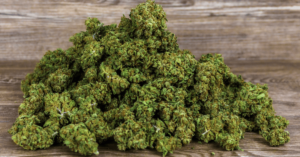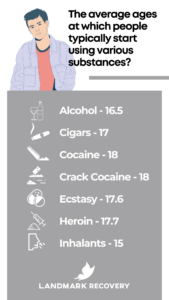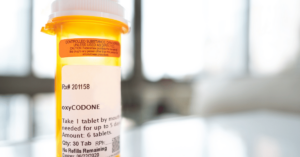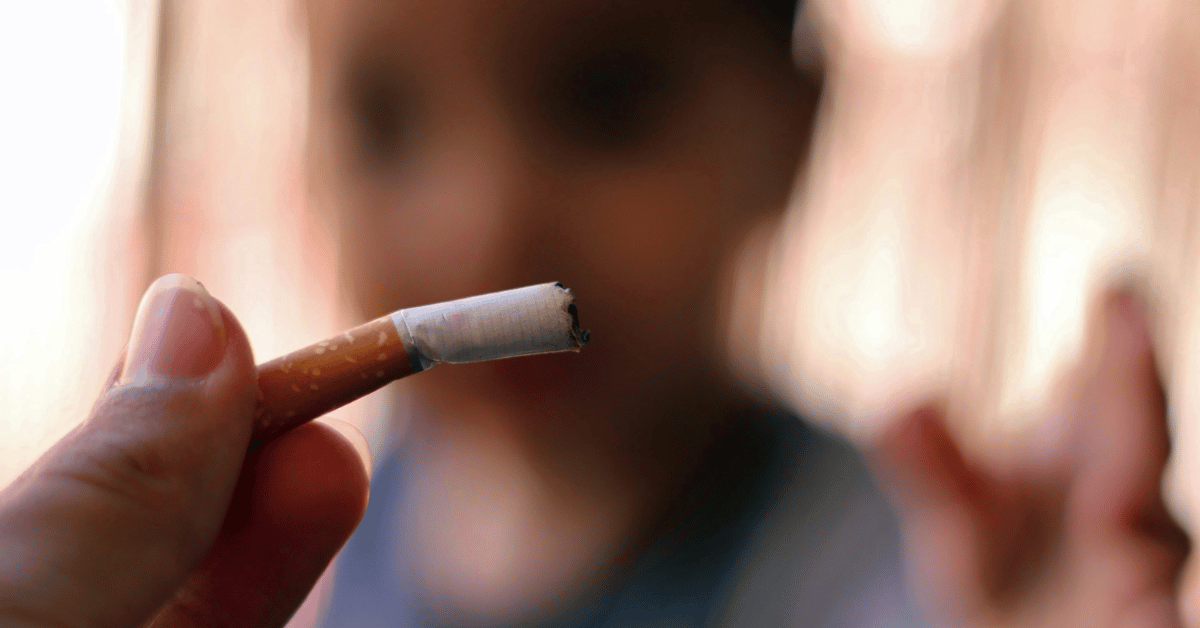When we consider the gateways to substance use most of us think about gateway drugs. It’s an easy way to place blame on an addiction. But the reality is that our behaviors, influences and experiences are the root causes of a substance use disorder. Still, the gateway drug plays a critical role. After all, it’s hard to get addicted to drugs if you’ve never used them.
What Is a Gateway Drug?
A gateway drug is any substance that initiates or starts further substance use. Gateway drugs are typically viewed as milder or less harmful substances that people experiment with before moving to harsher, more dangerous substances. While many people view alcohol, nicotine and marijuana as gateway drugs, the truth is any substance can be viewed as a gateway drug.
The gateway concept stems from what’s called the escalation hypothesis. It’s also known as the stepping-stone theory or just the gateway drug effect. The general tenor of the idea is that a user gets hooked on one drug then transition to other drugs for any of a variety of reasons.
Those reasons might include the idea that the user is simply bored with the high they get from the first substance. This is possible since increased tolerance comes with dependence, and tolerance usually means the drug’s effects feel weaker to the user. Another reason sometimes offered is that of biological alterations to the brain from prolonged use of the first substance, explored in this 2012 study and several others.
The term, gateway drug, dates back to the 1980s when the anti-drug movement hit critical mass. The movement stemmed from the influence of President Richard Nixon’s War on Drugs policy campaign. It greatly intensified the criminalization of substance abuse as a means to target Blacks and peace advocates who opposed the Vietnam War, resulting in both social and systemic barriers to drug rehab for the Black community. The campaign’s large focus on marijuana led to pot being labeled the “gateway drug.” Marijuana isn’t inherently “the gateway drug.” In fact, it might be a dangerous oversight to narrow one’s focus of the gateway-theory purely to cannabis extracts.
Why Do Gateway Drugs Matter?
Determining what is and is not a gateway drug is more so a conversation about what substances parents should watch out for when guarding their kids against substance abuse initiation. The average age of initiation (i.e. the time when kids typically start using) is pretty young. It differs across a variety of drugs, but there are several that kids consistently encounter for the first time as teenagers or, in the case of alcohol, even as preteens.
Illicit drug use is bad enough. The larger concern is whether or not that abuse will translate to other harder substances and negative behaviors.
Is Marijuana a Gateway Drug?
 Marijuana is considered a gateway drug by many addiction researchers. This is because it’s easy to access and considered less harmful than many other drugs. For these reasons many young people experiment with cannabis, often getting high for the first time.
Marijuana is considered a gateway drug by many addiction researchers. This is because it’s easy to access and considered less harmful than many other drugs. For these reasons many young people experiment with cannabis, often getting high for the first time.
The National Institute on Drug Abuse (NIDA) cites plenty of data in its support the claim that marijuana is a common gateway drug. Researchers who oversaw the National Epidemiological Study of Alcohol Use and Related Disorders found that adults who used marijuana during the first wave of the survey were more likely to develop alcoholism within the following three years than those who didn’t use marijuana. Cannabis users who already had alcohol use disorder proved more likely to increase their alcohol abuse tendencies.
“Early exposure to cannabinoids in adolescent rodents decreases the reactivity of brain dopamine reward centers later in adulthood,” NIDA reports. “To the extent that these findings generalize to humans, this could help explain the increased vulnerability for addiction to other substances of misuse later in life that most epidemiological studies have reported for people who begin marijuana use early in life.”
Is Marijuana a Gateway to Harder Drug Use?
It should be noted, though, that there’s a caveat with the way marijuana has been labeled. The component of the escalation hypothesis or stepping-stone theory that classifies a gateway drug as one that causes a person to use a harder drug doesn’t apply to marijuana.
“These findings are consistent with the idea of marijuana as a ‘gateway drug,’” according to NIDA. “However, the majority of people who use marijuana do not go on to use other, ‘harder’ substances. Also, cross-sensitization is not unique to marijuana.”
However, recent research suggests other substances like alcohol are, in fact, gateways to marijuana. This challenges the notion of which is the true gateway drug per se.
Is Alcohol a Gateway Drug?
Alcohol, the most widely used substance in the world, can be considered a gateway drug. Alcohol is often the first substance people try because it’s easy to get and is socially acceptable. One of the factors for whether or not a substance qualifies as a gateway drug is if the substance has psychoactive properties.
Alcohol is a psychoactive substance. In other words, it changes how the brain reacts to stimuli. This alone, however, doesn’t make it a gateway drug of course. Research data from several sources ostensibly confirms alcohol’s correlation with drug abuse initiation, though. The aforementioned 2012 study that analyzed biological alterations of the mind as a possible explanation for the gateway effect included this criterion.
criterion.
A list of the top 10 drugs abused by teens, doesn’t include alcohol because it is often not considered a “drug” by society. This was because data, as presented by institutions like the American Academy of Child & Adolescent Psychiatry, overwhelmingly shows that alcohol is consistently the earliest drug introduced to kids. Many parents give their teens permission to drink alcohol, or present drinking as “normal” behavior.
A 2015 study sampled high-school seniors throughout the U.S. Respondents who started drinking in sixth grade were consistently the ones who also reported later using illicit drugs compared to those who started in ninth grade or later.
Cross-sensitization from Alcoholism
NIDA has also reported that alcohol can make people neurologically more sensitive and even receptive toward the effects of other drugs. This is what’s referred to as cross-sensitization.
Cross-sensitization is the same phenomenon NIDA conceded on a separate occasion wasn’t uniquely characteristic of marijuana abuse. Alcohol presents a case in point for NIDA’s argument on that. Cross-sensitization potential is clinically observed as a possible hallmark of gateway drugs.
A user who experiences cross-sensitization is one who wittingly or unwittingly replaces one substance with another. Sometimes this happens to substance use disorder patients in recovery who avoid relapse on their problem substance but succumb to the abuse of another in the process.
Are Prescription Drugs Gateway Drugs?
An increasingly common question in recent years is whether medication prescribed by a doctor might be considered a gateway drug. The answer is yes. For evidence just look at the current opioid crisis, which is largely attributed to patients being prescribed painkillers and getting hooked on them. A common trend among people with opioid use disorder is that they were prescribed pills, quickly developed an addiction to them, then lost access to the prescription and resorted to illegal means of getting the same or similar drugs.
be considered a gateway drug. The answer is yes. For evidence just look at the current opioid crisis, which is largely attributed to patients being prescribed painkillers and getting hooked on them. A common trend among people with opioid use disorder is that they were prescribed pills, quickly developed an addiction to them, then lost access to the prescription and resorted to illegal means of getting the same or similar drugs.
Many people who became addicted to opioids turn to harder, more dangerous drugs. In fact, addiction experts now view prescription pain meds as a potential pipeline to heroin use. As such, the idea that a gateway drug should be so classified because of its potential to escalate one’s sensitization in favor of a more dangerous substance is fulfilled more so by opioids than by marijuana or alcohol.
Prescription Opioids Lead Many to Heroin
NIDA reports that the rate at which people started using heroin was 19 times higher for those who had previously reported pain reliever use for nonmedical purposes than among those who hadn’t. This was based on data pooled from the decade spanning 2002 to 2012.
To be clear, this strongly implicates prescription opioid use as a risk factor for heroin use. It was one of several studies to which NIDA pointed to demonstrate the correlative pathway from prescription opioids to heroin. NIDA noted another that found the same thing for 86% of inner-city youth who injected drugs and were interviewed from 2008 to 2009.
The Biggest Gateway Drugs
The National Institutes of Health (NIH) recognize alcohol, marijuana and nicotine as the primary gateway drugs. The term “primary” is used to denote the fact that any substance can become a gateway drug.
Research shows that nicotine can make people more susceptible to cocaine use disorder, according to the U.S. Department of Justice. A research team led by Dr. Eric Kandel at Columbia University, with support from NIDA, investigated the effects of nicotine on rodents. The study, published in Science Translational Medicine, concluded that it consistently magnified the animals’ vulnerability to cocaine.
“Now that we have a mouse model of the actions of nicotine as a gateway drug, this will allow us to explore the molecular mechanisms by which alcohol and marijuana might act as gateway drugs,” Kandel explained. “In particular, we would be interested in knowing if there is a single, common mechanism for all gateway drugs or if each drug utilizes a distinct mechanism.”
Gateway Intervention
If you or someone you know is already experimenting with a gateway drug, now’s the time to intervene. Stats paint a grim picture of the alternative outcomes. For alcoholism or other substance use disorders, call our addiction specialists at 888.448.0302. Landmark Recovery is prepared to handle all substance use disorders from heroin to methamphetamine.

Choose Recovery Over Addiction
We're here 24/7 to help you get the care you need to live life on your terms, without drugs or alcohol. Talk to our recovery specialists today and learn about our integrated treatment programs.




